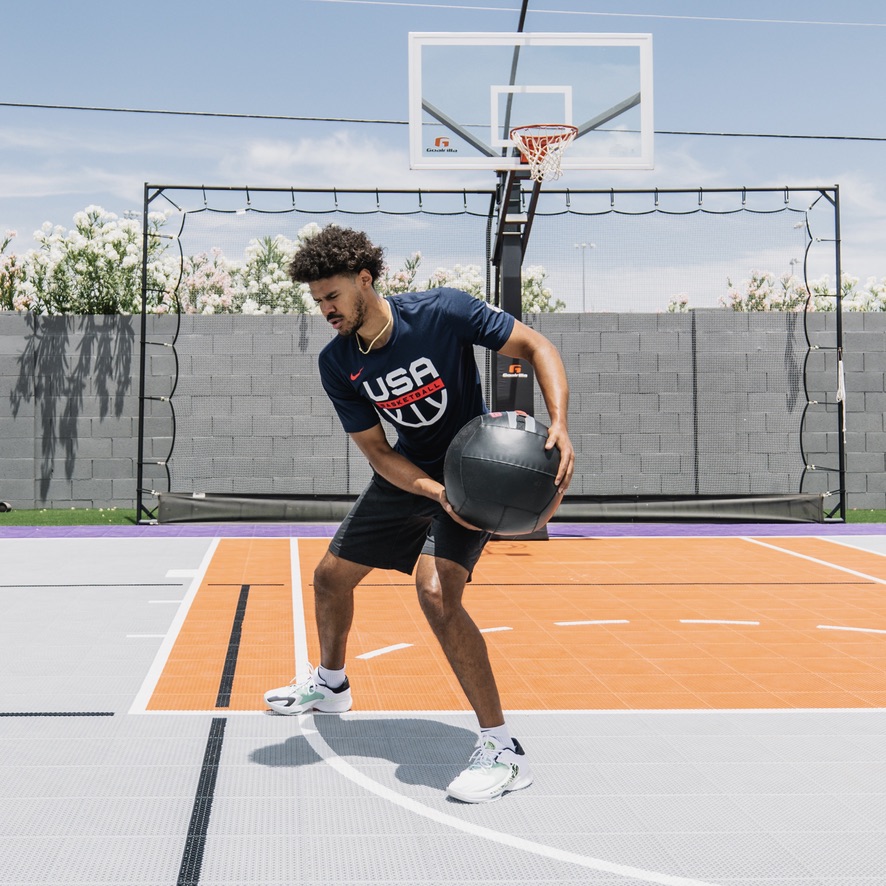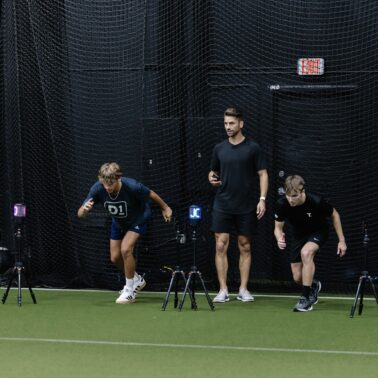“The highest accumulation of mechanical forces in sport occurs during deceleration—meaning training should focus on the body’s ability to absorb and redistribute these loads efficiently.”
Harper et al. (2024)
What You will learn
- How whole-body braking mechanics dictate knee joint loading.
- The role of eccentric knee extensor strength in force absorption.
- A structured approach to integrating deceleration training into knee rehabilitation.
- How to evaluate readiness for return to sport and high-intensity movement.
Rehabilitation from a knee injury—whether it be an ACL tear, meniscus repair, patellar tendinopathy, or general instability—often focuses on restoring strength, mobility, and movement quality. Yet, there is a missing link in many rehab protocols: deceleration training.
Most injuries occur not when an athlete is accelerating, but when they are stopping, landing, or cutting. This process—braking or horizontal deceleration—is essential for safe movement and performance in both sport and daily activity. If the body is unable to effectively absorb and distribute forces, the knee joint bears excessive load, increasing the risk of re-injury.
The ability to decelerate properly is a system-wide skill, requiring coordination between eccentric lower-limb strength, neuromuscular control, and movement efficiency.
Why Deceleration is More Than Just Strength
According to The Braking Performance Framework (Harper et al., 2024), horizontal deceleration is a highly demanding locomotor skill that exposes the body to braking forces up to 5.9 times body weight—significantly higher than those experienced during acceleration.
This force is absorbed throughout the kinetic chain, but the knee joint plays a disproportionately large role. The quadriceps and hamstrings must eccentrically control knee flexion, while the foot, ankle, and hip distribute forces to prevent overload on the knee.
Key concepts from The Braking Performance Framework:
- Braking Force Control: The ability to position the body optimally to reduce forward momentum.
- Braking Force Attenuation: The ability to absorb and distribute forces effectively, reducing stress on passive structures like the ACL and meniscus.
The knee must function within this larger system, but if local eccentric strength is insufficient, the entire braking sequence is compromised.
The Role of Eccentric Knee Strength in Braking Performance
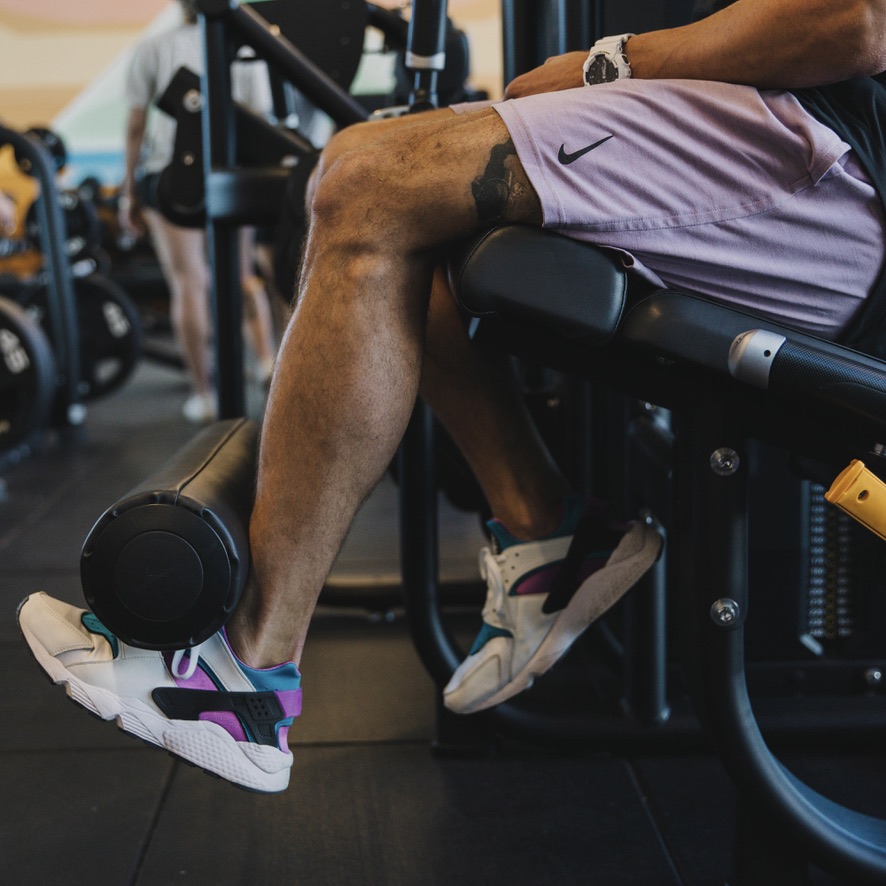
The knee’s ability to decelerate is not just about strength, but about the balance between concentric and eccentric force production.
Research by Li et al. (1997) on isokinetic knee strength testing found that:
- Eccentric knee extensor torque is significantly greater than concentric torque, confirming that the quadriceps are designed to absorb more force during deceleration than they produce during acceleration.
- Eccentric-to-concentric ratios below 0.85 are associated with increased knee injury risk, highlighting the importance of building eccentric control before progressing to high-speed movement.
These findings reinforce that if eccentric knee strength is not specifically trained, an individual will struggle to decelerate safely, increasing knee joint stress.
A four-Phase Approach to Deceleration Training in Knee Rehab
To restore effective whole-body braking, rehabilitation must progress from local eccentric knee strengthening to integrated movement control and high-speed braking tasks.
Phase 1: Eccentric Strength and Load Tolerance
Objective: Develop eccentric knee extensor strength and neuromuscular control to tolerate braking forces.
Key Exercises
- Eccentric Leg Press (6-second lowering phase) – Reinforces controlled knee flexion under load.
- Single Leg Step-Downs (Slow Lowering) – Introduces single-leg control
- Nordic Hamstring Curls – Strengthens posterior chain to balance quad dominance.
- Reverse Sled Drags – Improves quad endurance without the impact of running or jumping.
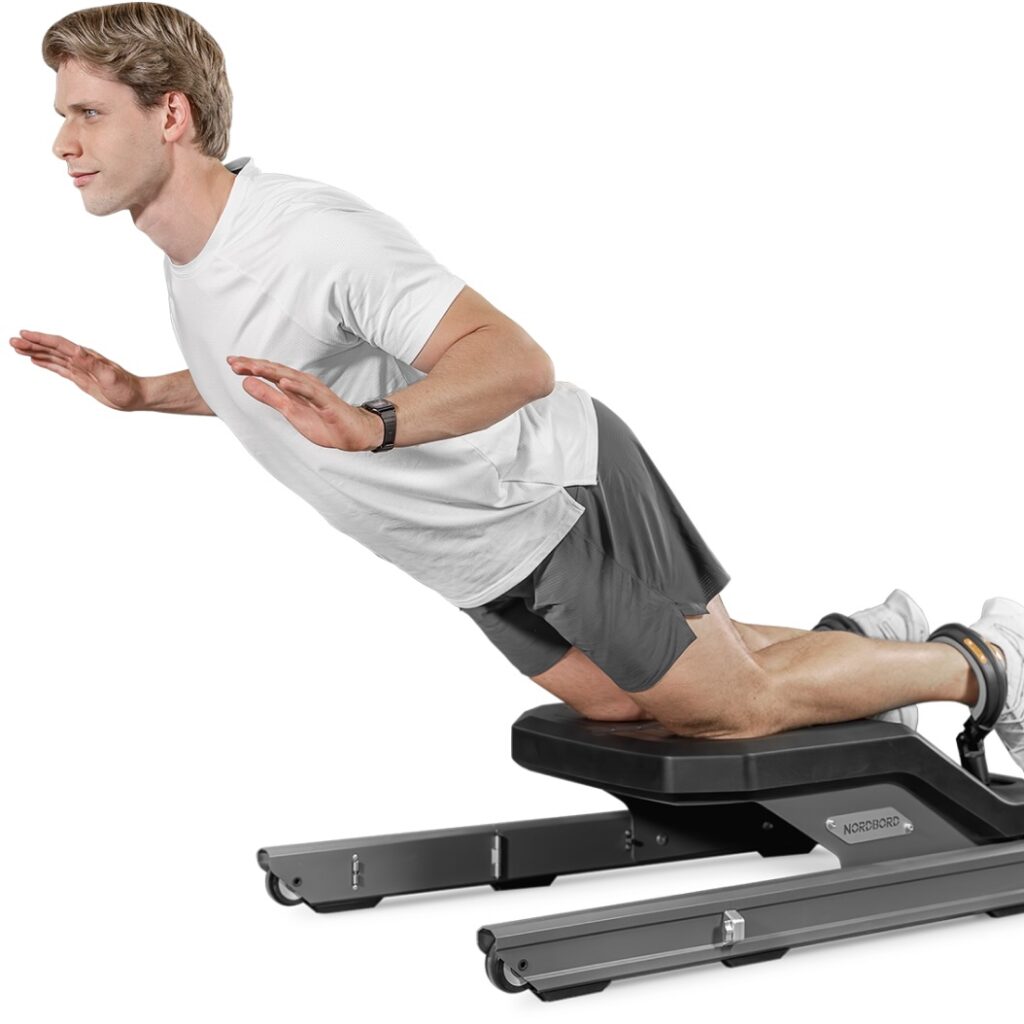
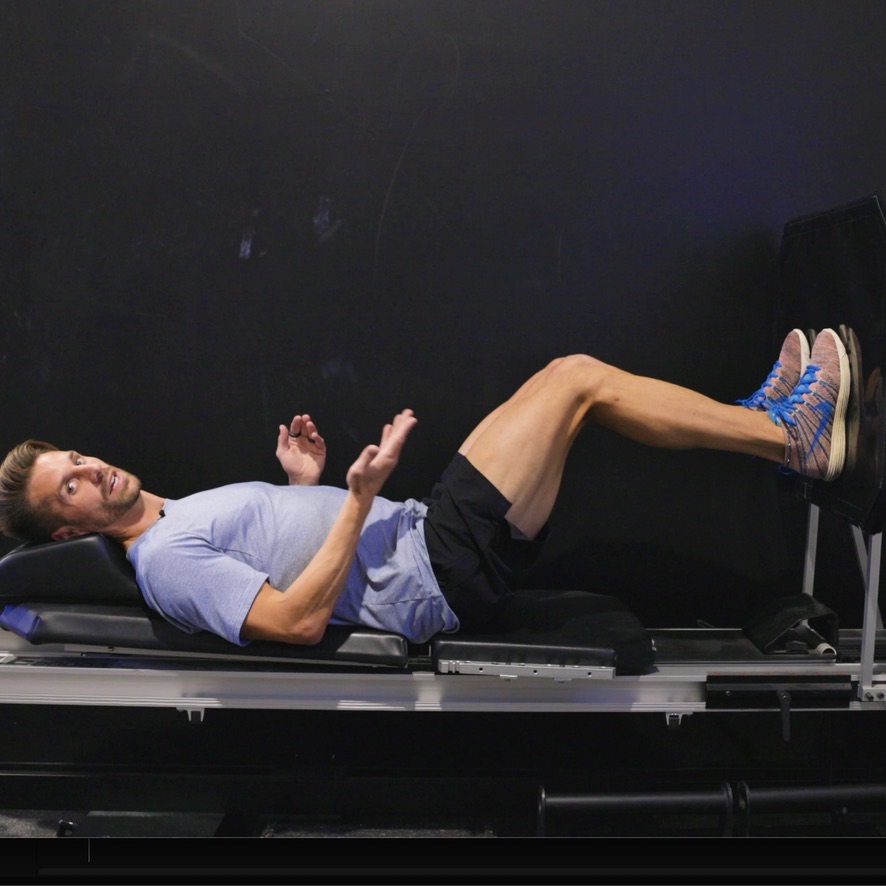
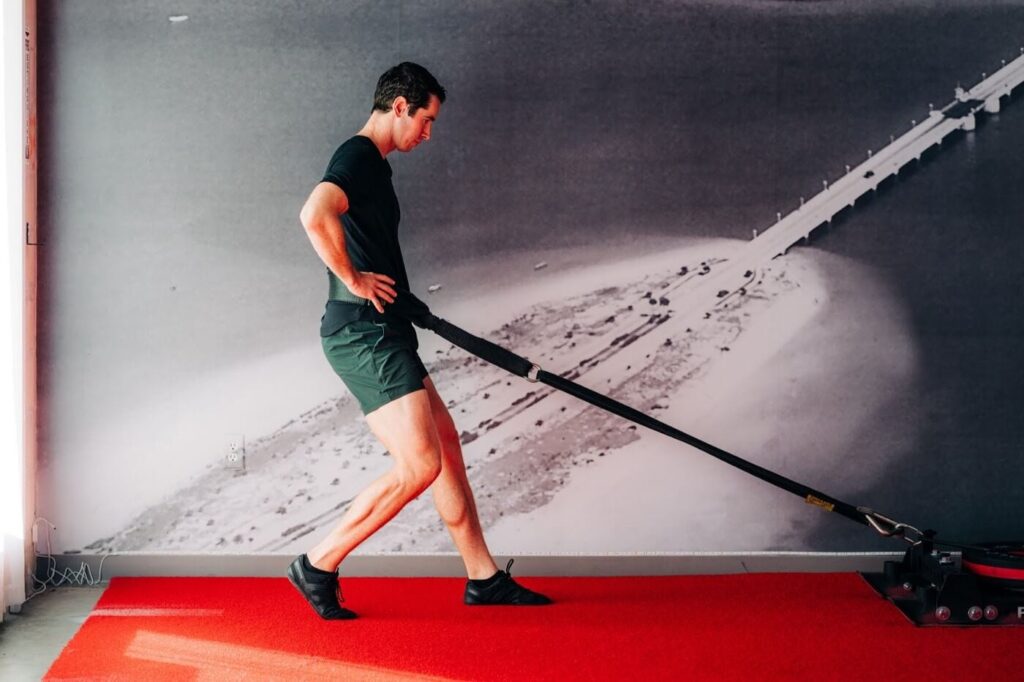
Why It Matters:
If you do not make the correct repairs to car parts following a car crash, then chances are the car will not drive well. The same is true for knee rehab. Too often I see clients and athletes overlook the true quadriceps strength in a rush to get back to running or jumping. If you do not address quadriceps strength, then compensations during running and jumping will almost always occur.
Phase 2: Low Impact Deceleration
One of my favorite phases during any rehab or training program is a block that focuses on deceleration training without the impact. This phase is a great way to teach high velocity movements without the stress of the impact from running or cutting.
Some of my favorite tools to use for this block are medicine balls and large bands. Medicine balls as seen in the above video offer a great tool to perform fake tosses and catches.
Bands on the other hand offer an opportunity to overload the deceleration phase with minimal impact. The goal of both modalities is to either not let the medicine ball or band continue to pull you once you stop moving.
Phase 3: Landing and Force Absorption
Objective: Teach impact absorption and force distribution during stopping and landing tasks.
Key Exercises
- Box Drop to Stick Landing – Emphasizes knee control in sagittal plane braking.
- Single-Leg Hop & Hold – Reinforces unilateral force absorption and balance.
- Lateral Bound & Stick – Introduces frontal plane braking forces, essential for cutting and directional changes.
- Drop Squats (Rapid Eccentric Control) – Trains fast force absorption with controlled knee flexion.
Why It Matters:
Understanding appropriate biomechanics and proper force distribution is critical in braking. If an athlete cannot effectively distribute load across the hip, knee, and ankle, excessive stress is placed on the knee joint.
Phase 4: Dynamic Change of Direction and High-Velocity Deceleration
Objective: Train sport-specific deceleration skills, preparing for real-world braking demands.
Key Exercises
- Sprint-to-Stop Drills – Emphasizes braking mechanics under higher loads.
- Drop Step Deceleration – Trains posterior braking forces common in basketball and soccer.
- Lateral Deceleration & Re-acceleration – Mirrors game-like stopping and cutting actions.
- Reactive Agility Drills – Introduces decision-making under deceleration loads.
Why It Matters:
This phase ensures that knee braking strength transfers to real-world movement, addressing both reactive braking and sport-specific agility demands.
Assessing Readiness for Return to Play
Traditional return-to-play tests often focus on strength and hop tests, but these do not assess braking control.
Key Testing Metrics for Deceleration Readiness
- Reactive Strength Index (RSI) – Assesses plyometric efficiency, a strong predictor of safe force absorption. A valuable tool for assessing RSI and many other variables is dual force plates (learn more here.)
- Isokinetic Testing (Quad-to-Hamstring Ratio) – Identifies imbalances that impact deceleration.
- Cutting and Landing Symmetry Analysis – Detects asymmetrical force absorption, a key predictor of reinjury.
Without testing braking control, athletes risk returning before their knee can handle deceleration loads, increasing reinjury risk.
Conclusion: Deceleration Training is the Key to Knee Rehab
Eccentric knee strength dictates braking efficiency—if it is insufficient, the knee absorbs excessive force.
Whole-body deceleration must be systematically trained—from controlled strength work to dynamic braking.
Return-to-play decisions should assess braking control, not just strength and hop tests.
By connecting whole-body braking mechanics with local knee strength, rehabilitation becomes more effective, reducing re-injury risk and enhancing long-term movement quality.
Learn more about Return to Sport Testing
Tune into this podcast episode with physical therapist & isokinetic expert Daniel Bodkin, who highlights key criteria to clear an athlete back to sport.
Want to Learn More?
Subscribe today to Adam’s YouTube channel to get the latest on rehab, training, sports science, and so much more!

Harper DJ, Cervantes C, Van Dyke M, et al. The Braking Performance Framework: Practical Recommendations and Guidelines to Enhance Horizontal Deceleration Ability in Multi-Directional Sports. Int J Strength Cond. 2024;4(1). doi:10.47206/ijsc.v4i1.351
Li RC, Wu Y, Maffulli N, Chan KM, Chan JLC. Relationship Between Isokinetic Concentric and Eccentric Contraction Modes in the Knee Flexor and Extensor Muscle Groups. J Orthop Sports Phys Ther. 1997;26(3):142-148.
